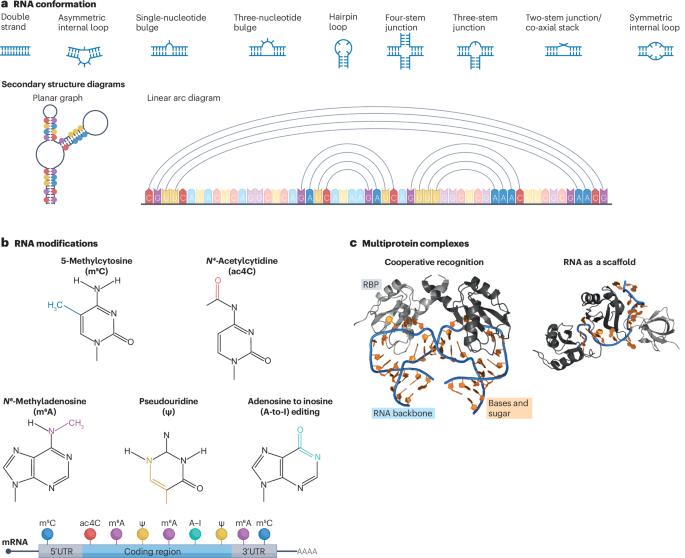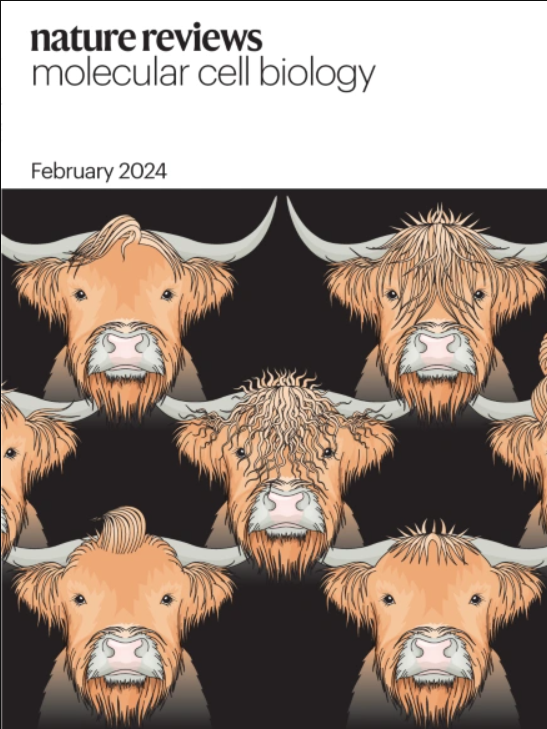用人工智能解码非编码RNA的相互作用和功能
IF 90.2
1区 生物学
Q1 CELL BIOLOGY
引用次数: 0
摘要
除了编码蛋白质外,mrna还具有环境特异性调节作用,有助于许多细胞过程。然而,发现新的mRNA功能受到传统生化和计算方法的限制。在本路线图中,我们强调了人工智能如何通过促进RNA生物学家和计算科学家之间的合作来改变我们对RNA生物学的理解,从而推动这一基础研究领域的创新。我们讨论了mRNA的非编码区,包括内含子和5 ‘和3 ’非翻译区,如何调节mRNA的代谢和相互作用组,以及目前表征这些区域的挑战。我们进一步讨论了可用于学习具有生物学意义的RNA序列表示的大型语言模型。我们还提供了将大型语言模型与图神经网络集成的详细路线图,以利用公开可用的测序和知识数据。采用这一路线图将使我们能够预测RNA与不同分子的相互作用,并建立情境特异性mRNA相互作用组的模型。本文章由计算机程序翻译,如有差异,请以英文原文为准。


Decoding the interactions and functions of non-coding RNA with artificial intelligence
In addition to encoding proteins, mRNAs have context-specific regulatory roles that contribute to many cellular processes. However, uncovering new mRNA functions is constrained by limitations of traditional biochemical and computational methods. In this Roadmap, we highlight how artificial intelligence can transform our understanding of RNA biology by fostering collaborations between RNA biologists and computational scientists to drive innovation in this fundamental field of research. We discuss how non-coding regions of the mRNA, including introns and 5′ and 3′ untranslated regions, regulate the metabolism and interactomes of mRNA, and the current challenges in characterizing these regions. We further discuss large language models, which can be used to learn biologically meaningful RNA sequence representations. We also provide a detailed roadmap for integrating large language models with graph neural networks to harness publicly available sequencing and knowledge data. Adopting this roadmap will allow us to predict RNA interactions with diverse molecules and the modelling of context-specific mRNA interactomes. Studying RNA function is constrained by limitations of traditional methods. This Roadmap discusses how artificial intelligence (AI) can enhance the study of how non-coding regions of mRNA regulate its function, and suggests how to use AI to harness publicly available data towards that goal.
求助全文
通过发布文献求助,成功后即可免费获取论文全文。
去求助
来源期刊
CiteScore
173.60
自引率
0.50%
发文量
118
审稿时长
6-12 weeks
期刊介绍:
Nature Reviews Molecular Cell Biology is a prestigious journal that aims to be the primary source of reviews and commentaries for the scientific communities it serves. The journal strives to publish articles that are authoritative, accessible, and enriched with easily understandable figures, tables, and other display items. The goal is to provide an unparalleled service to authors, referees, and readers, and the journal works diligently to maximize the usefulness and impact of each article. Nature Reviews Molecular Cell Biology publishes a variety of article types, including Reviews, Perspectives, Comments, and Research Highlights, all of which are relevant to molecular and cell biologists. The journal's broad scope ensures that the articles it publishes reach the widest possible audience.

 求助内容:
求助内容: 应助结果提醒方式:
应助结果提醒方式:


